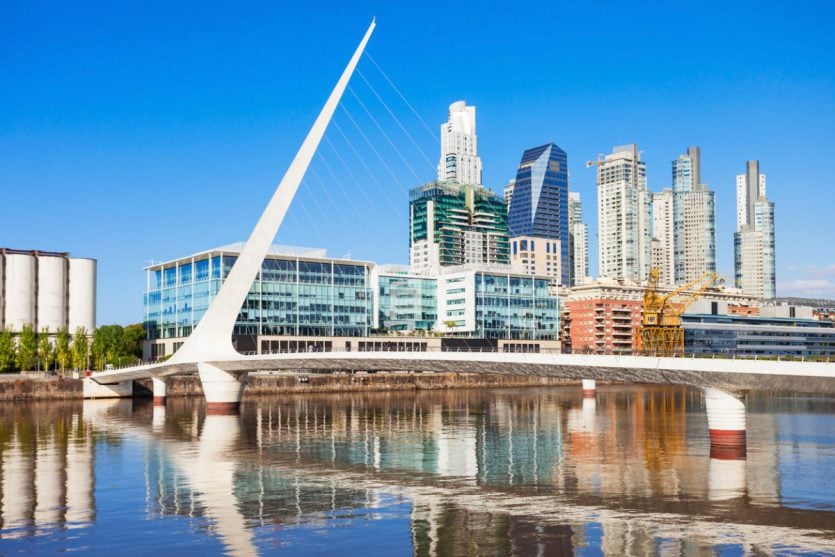Argentina, the eighth largest country in the world, is renowned for its diverse landscapes, rich cultural heritage, and bustling urban centers. Among its many features, the ports in Argentina stand out as crucial nodes in the country’s historical and economic tapestry. These ports, from the sprawling metropolis of Buenos Aires to the scenic harbors of Ushuaia, offer a fascinating blend of past and present, attracting traders, travelers, and tourists alike. This article delves into the history, significance, and attractions of Argentina’s major ports, offering insights for visitors looking to explore these vibrant gateways.
What are the main ports in Argentina?
The history of ports in Argentina is intrinsically linked to the nation’s development. The Port of Buenos Aires, situated in the Retiro ward of Buenos Aires, colloquially known as Puerto Nuevo (New Port), remains the largest and most significant in the country. It was established in the 16th century by Spanish colonizers and quickly became a crucial hub for the Spanish Empire’s South American territories, facilitating the export of silver, leather, and other commodities. It handles approximazely 11 million tons of cargo annually and serves as the primary gateway for imports and exports, connecting Argentina to global markets. Key exports include agricultural products, such as soybeans and corn, as well as industrial goods like automobiles and machinery. During Argentina’s golden era of immigration (until 1930), the port saw significant passenger traffic. Nowadays, it mainly serves tourists visiting Argentina and those traveling to Uruguay.
In the 19th century, ports like Rosario ( located on the Paraná River) and Bahía Blanca emerged as vital trade centers, driven by the booming agricultural sector. The export of beef, wheat, soy, corn, barley, rice, flax seed, sugarcane, cotton, citrus fruits, and grapes are Argentina’s top export commodities, transformed the Rosario port into a bustling hub of commerce. It plays a crucial role in the Paraguay-Paraná waterway.
As for the port of Bahía Blanca, it facilitates the export of oil and gas, and contributes to Argentina’s energy and trade landscape.

Attractions for Travelers
For travelers, the ports of Argentina offer a blend of historical landmarks and cultural experiences. Buenos Aires, often referred to as the “Paris of South America,” boasts an array of attractions. The Puerto Madero district, a revitalized dockland area, is now a trendy spot with upscale restaurants, bars, and cultural venues. Visitors can stroll along the waterfront, enjoy the scenic views, and visit the iconic Puente de la Mujer, a striking bridge designed by architect Santiago Calatrava.
Further south, the port city of Ushuaia, known as the “End of the World,” is a gateway to the stunning landscapes of Tierra del Fuego and Antarctica. Ushuaia’s port is the embarkation point for cruises to the Antarctic Peninsula, offering travelers a chance to explore one of the most remote and pristine regions on Earth. In Ushuaia, visitors can also explore the Maritime Museum housed in the iconic Cárcel del Fin del Mundo (Prison at the End of the World) which provides insights into the city’s maritime history of Tierra del Fuego from Magellan’s discovery to the customs and traditions of the Yagán people. Learn about gold seekers, seal hunters, life on Patagonian ranches, and pioneering adventures.
As for Rosario, the city offers cultural and recreational attractions. The National Flag Memorial, located near the riverbank, is a symbolic construction and stands in the Parque Nacional a la Bandera, where General Manuel Belgrano first hoisted the Argentine flag along the Paraná River. The Paraná River itself is a haven for water sports and river cruises, providing a scenic backdrop for outdoor activities.
Interesting Details for Visitors
Travelers visiting the ports in Argentina can enjoy a variety of unique experiences. In Buenos Aires, the Feria de San Telmo, held every Sunday, is a vibrant street market near the port area where visitors can find antiques, local crafts, and live performances. The nearby Boca district, famous for its colorful houses and tango music, is another must-visit spot.
In Ushuaia, the Tren del Fin del Mundo (End of the World Train) offers a picturesque journey through the stunning Patagonian landscape, retracing the route of an old convict train. For wildlife enthusiasts, a boat tour from the port can lead to encounters with penguins, sea lions, and even whales in the Beagle Channel.
For those interested in industrial tourism, a visit to the Port of Bahía Blanca offers insights into the country’s grain export operations. Guided tours can provide an in-depth look at the port’s facilities and the logistical processes involved in handling bulk commodities.
The ports in Argentina are thus not just gateways for goods and services but also portals to the country’s rich history and diverse attractions. From the bustling urbanity of Buenos Aires to the remote beauty of Ushuaia, these ports offer travelers a unique blend of cultural experiences, historical insights, and natural wonders.
No comments yet
There are no comments on this post yet.




Leave a comment